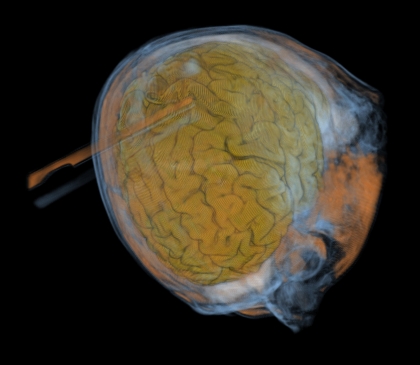Game developer, tinkerer, musician.
© 2025. All rights reserved.
Introduction
Volume Rendering is a technique to make bidimensional proyections from discreet tridimensional data. The main applications with this technique are in the medical data visualization, geological data or as a representation of fluid dynamics. This section resumes the work done between September 2004 and March 2006 about Volume Rendering, done by Francisco Morillo and me.
Video en Youtube.

Authors: Ciro Durán, Francisco Morillo Date: March 31st, 2006
Content
This thesis evaluates the ways that conventional graphic hardware can be used to make good quality and high performance data visualizations. VR as a physical process simulated the behavior of light when passes through a semi-transparent medium, a behavior that involves expensive calculations in time and space. New angles on this problem try to accelerate the simulation by having parts of the process pre-calculated.
The objective of this thesis was to implement and evaluate several direct VR techniques (ray casting and texture mapping-based), and to implement the works of Westermann and Sevenich, and Engel, Kraus and Ertl. The two papers focus in the use of texture-mapping mechanisms and pre-calculated bits of the VR integral (pre-integration) in order to achieve high quality, high performance results which can compete with other more complex techniques.
We also implemented direct VR using OpenGL advanced techniques and realtime shaders using Cg (C for graphics), to have a reference point when evaluating performance and quality. We tested these and compared the results obtained. The results show that data visualization using VR over conventional graphic hardware in real time is viable.
The book is available for downloading. It’s completely written in Spanish, with no current plans of translating it. Download Texture Mapping Based Volume Rendering. Requires a PDF reader.
These presentations were given at my university, so they are in Spanish as well.
Visit the Volume Rendering gallery to see some screenshots of our programs.